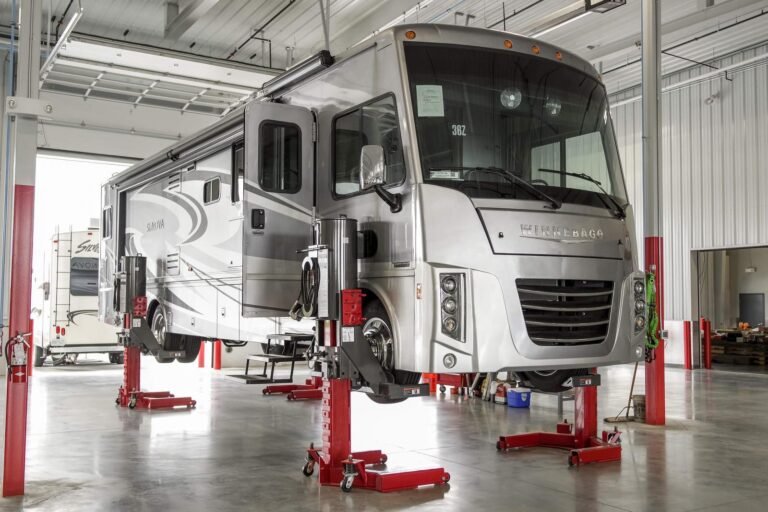Inside the Hidden World of Car Scrap Yards: Where Old Vehicles Find New Purpose
Introduction
Have you ever wondered what happens to a car once it has reached the end of its life? We often think of old, rusting cars as junk, but behind the scenes, there’s a thriving world where these vehicles are dismantled, recycled, and repurposed. Cash for cars Sunshine Coast, or auto recyclers, are the unsung heroes in the automotive world, ensuring that old vehicles find new life in ways that benefit the environment and even your wallet. So, let’s take a deep dive into this hidden world and explore how scrap yards work, what happens to old cars, and why they are far more important than you might think.
What is a Car Scrap Yard?
A car scrap yard, often called an auto recycling facility or wrecking yard, is a place where end-of-life vehicles (ELVs) are dismantled, recycled, and salvaged for parts. These facilities are essential to the automotive industry’s ecosystem, acting as a bridge between old, unusable cars and the recycling world. When a vehicle is too old to repair or has been in an accident, it ends up in a scrap yard, where its remaining value is extracted.
But car scrap yards aren’t just junkyards—they’re organized recycling centers, efficiently managing the process of turning what seems like trash into treasure.
The Journey of an Old Car
Ever wondered what happens when a car arrives at a scrap yard? It’s a well-coordinated process. First, the vehicle is assessed for parts that can be reused. Then, fluids like oil, gasoline, and brake fluid are drained to prevent contamination. After that, the vehicle is dismantled, with reusable parts set aside for resale, and the remaining materials sent off for recycling.
In a way, this is where an old car gets a second life. Parts like engines, transmissions, and even seats can find a new purpose in other vehicles, while the metal from the car is melted down and reused in manufacturing.
Why Cars End Up in Scrap Yards
Cars end up in scrap yards for various reasons, and it’s not always because they’re ancient. Some common reasons include:
- Accidents: After a major collision, some vehicles are deemed too expensive to repair.
- Wear and Tear: Over time, every car reaches a point where maintenance costs exceed its value.
- Emissions Regulations: Stricter environmental laws can push older, less efficient vehicles off the road.
- Technological Obsolescence: As automotive technology advances, older cars become obsolete and more difficult to repair.
Each of these reasons leads to one inevitable conclusion: the car’s final destination will be the scrap yard, where it can at least contribute to something new.
The Art of Car Dismantling
Dismantling a car is more than just pulling it apart. It’s a carefully orchestrated process where every piece is examined for potential reuse. Skilled workers dismantle the car in stages, removing valuable components like the engine, transmission, tires, and electronics.
Think of it as a surgeon carefully operating on a patient. Just like a doctor must know exactly what to do to keep the body functioning, dismantlers must understand each vehicle’s mechanics to ensure that valuable parts are preserved and repurposed.
What Happens to the Parts?
Once a car is dismantled, its parts are divided into three categories:
- Recyclable Parts: Materials like metal, glass, and rubber can be melted down or repurposed.
- Reusable Parts: Components such as engines, transmissions, and headlights are tested and resold.
- Non-Recyclable Waste: Sadly, some materials can’t be recycled or reused and must be disposed of responsibly.
Most parts find a second life, either in another vehicle or in some form of recycled material. For example, the steel from old cars is melted down and used to manufacture new cars, construction materials, and even appliances.
How Scrap Yards Support the Environment
You might be surprised to learn that car scrap yards play a key role in protecting the environment. By recycling and reusing parts, they reduce the need for new raw materials, saving energy and resources. Recycling just one car saves enough energy to power an average home for six months.
Moreover, by safely handling toxic fluids and chemicals like oil, antifreeze, and refrigerants, scrap yards prevent harmful substances from leaking into the environment. It’s all part of a broader effort to keep our planet green.
The Role of Scrap Metal in Recycling
Did you know that up to 80% of a vehicle’s materials can be recycled? Much of this comes from scrap metal. Metals like steel, aluminum, and copper are highly recyclable and can be used repeatedly without losing quality. In fact, the steel from your old car could eventually find its way into a new car, a building, or even a bridge.
Scrap yards are vital in this process, collecting and processing metal to be reused in industries ranging from construction to manufacturing.
What Happens to Fluids and Chemicals?
One of the lesser-known but crucial aspects of car recycling is the safe disposal of hazardous fluids and chemicals. A vehicle contains various liquids like engine oil, brake fluid, and transmission fluid, all of which can be harmful to the environment if not handled properly.
Scrap yards are equipped to extract, treat, and either recycle or dispose of these fluids in an environmentally responsible way. Many fluids, such as engine oil, can even be cleaned and reused.
Salvageable Parts and Their New Purpose
Salvageable parts from old vehicles find their way into countless new purposes. For instance, a functioning engine might be installed in another car, or smaller parts like alternators, batteries, and air conditioning systems could be sold to auto repair shops. Even something as simple as a door or seat can be refurbished and reused.
This process not only saves money for consumers but also reduces the demand for new manufacturing, cutting down on energy use and carbon emissions.
Economic Benefits of Car Scrap Yards
The economic impact of car scrap yards goes beyond just selling used parts. By recycling cars, scrap yards help create jobs, reduce waste, and lower manufacturing costs. Plus, consumers who choose to buy used or refurbished parts save significantly compared to purchasing new ones.
In fact, the auto recycling industry is a multi-billion-dollar sector, providing employment opportunities in everything from dismantling to reselling parts.
Challenges Facing Scrap Yards Today
Despite their many benefits, scrap yards face several challenges. These include:
- Environmental Regulations: Stricter laws around pollution and waste disposal require constant adaptation.
- Technological Advancements: As cars become more complex, dismantling them and recycling their parts can become more challenging.
- Market Fluctuations: The value of scrap metal can vary, impacting the profitability of scrap yards.
These hurdles make it crucial for scrap yards to innovate and adapt to the ever-changing landscape.
The Future of Car Recycling
The future of car recycling looks promising. As environmental concerns continue to grow, more emphasis is being placed on sustainable practices. Electric and hybrid vehicles present new challenges, but they also offer opportunities to develop specialized recycling processes for their unique components, like lithium-ion batteries.
Advances in technology, such as automation and AI, could further streamline the recycling process, making it faster, safer, and more efficient.
Why You Should Care About Car Recycling
Why should you care about what happens to old cars? For starters, it’s about sustainability. By supporting car recycling, you’re contributing to a system that reduces waste, conserves resources, and lowers carbon emissions. Every car that’s recycled means fewer raw materials are mined from the earth, fewer pollutants are released, and fewer landfills are filled with hazardous waste.
Additionally, if you ever need car parts, buying from a scrap yard can save you a significant amount of money while helping the environment.
Choosing a Reliable Scrap Yard
If you’re looking to scrap your car or purchase used parts, it’s important to choose a reliable scrap yard. Look for:
- Licensing: Ensure the yard follows local regulations and environmental standards.
- Reputation: Check reviews and ask for recommendations.
- Transparency: A good yard will be upfront about pricing and processes.
By picking a trustworthy facility, you can be confident that your old car will be handled responsibly. cash for scrap cars Aspley
Final Thoughts on Car Scrap Yards
Car scrap yards are far more than graveyards for old vehicles. They are essential cogs in the wheel of sustainability, providing economic and environmental benefits that ripple through society. From recycling metal to repurposing parts, scrap yards give new life to old cars, proving that one vehicle’s end can be another’s beginning.





